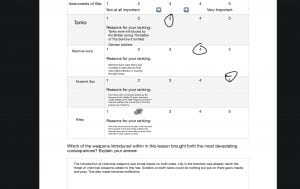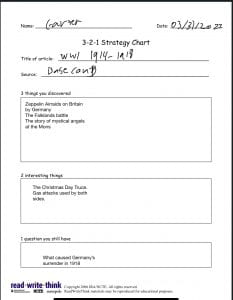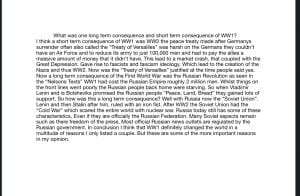The War To End All Wars…? (Not really)
Hello welcome back to another Humanities blog in this project we learned about the First World War and Canadian involvement. Our final product was a Comic Book about a battle that Canada fought in, what happened on the home front, and certain groups of people and how they were involved like women or indigenous contributions. Alright so the Driving Question for this project was: How might we use graphic novels (comic books) to understand Canadian involvement in WW1. The answer will come later.
Now some back story and simple history on WW1. So the First World War was fought from 1914-1917. The belligerents or who participated, on the allies you had: Britain, France, Russia, Belgium, Italy, Japan, Portugal, Canada, USA, Serbia, and other British colonial powers. On the Central Powers side: Germany, Austria-Hungary, Bulgaria, Ottoman Empire. There were a number of events leading up to this war or the Great War as its often referred to. Chief among these causes was the assassination of Austria-Hungarian Arch Duke Franz Ferdinand by Serbian nationalist Gavrilo Princip and the terrorist organization he work for known as the Black Hand. This among many other factors lead to the WW1. Now here is where things get a little confusing so how did everyone end up at war with each other. Well Austria-Hungary after support from Germany, declares war on Serbia but Serbia is protected by Russia and Russia and France have an alliance so they all declare war on each other. And finally when German Troops invade neutral Belgium who is an ally of Britain they declare war on Germany thus Canada as a British Dominion ends up in the First World War.
So now that you have the basics of this war. The topic I got for my comic was: “The Battle of Vimy Ridge”.
Now if your Canadian you’ve probably heard of this battle it is arguably one of Canada’s greatest contributions and victory’s in WW1.
So what was Vimy Ridge? Vimy Ridge was a assault on heavily fortified German defensive positions at the top of the ridge they launched the attack on April 9th 1917. The battle ended 3 days later on April 12th. Over 3,000 Canadians had died but the ridge had been captured.
So one of the first things we did in this project was learn about the belligerents that I listed above our goal was to create a image to show who participated we made this image

We then learned all about new weapons of warfare such as the machine gun. Which mowed down soldiers on both sides during trench charges. New methods of warfare such as chemical weapons were used in WW1 by both sides. The invention of the Tank by the British changed the war and the post war world. We learned most of this from the Nelson Texts which are socials textbooks. Here is the link to the textbooks Nelson Texts
Keystone Time!!!
So keystone one was What factors precipitated “The War To End All Wars?”
In this keystone we learned about all factors leading to WW1 we read a section from the Nelson Texts about it and did a worksheet

Also in this keystone was the Belligerents of War image shown above ⬆️. We also wrote a paragraph about WW1 causes which I will show now.

So what did I learn from this Keystone? I learned all about the idea of Cause and Consequence which is that every consequence has a cause. Such as in WW1. What I can do better for next is my Cause-Consequence paragraph was not very clear and I jumped all over the place. The next time we are asked to write a paragraph such as this I will take more time on it and try to keep my ideas clear and concise.
Keystone #2 How can a graphic novel support my understanding of WW1?
In this keystone we read the Graphic Novel World War 1 1914-1918 we did 3 reflections on the book here is the first one we did was a 3,2,1 sheet about what we learned what we found interesting and what questions we still had. So here is mine.

The next reflection was a battle mentioned in this book. And to make a 5Ws worksheet the 5 Ws are Who, What, Where, When, Why. The battle I chose was the Gallipoli Campaign in which the allies tried to capture the Dardanelles which was a passage to the Black Sea where Russia is located. So here is my 5Ws sheet

The 3rd and Final reflection was a paragraph of one long term and short term consequence of WW1.

Overall I found the graphic novel pretty cool the drawings were very detailed and the information was well informative. And helped further my knowledge on WW1. For next time I can definitely improve once again my paragraph writing was In this one I was hopping from one topic to another and not really sticking with an Idea. I needed to do all things stated above in the first keystone. However I am proud of my 5Ws research as I enjoyed finding the information about the Gallipoli Campaign. In addition to reading the comic we watched the film 1917. I throughly enjoyed this movie as it had beautiful cinematography. It also portrayed the life in the trenches of WW1 very well.
The third and final keystone How can I support an understanding of WW1 and it’s affect on Canada within a comic panel?
This keystone was all about the planning and creation of our comic. So for starts we made a 5Ws +story arc of our battle to help us plan out and research our topic. Here is mine.
The next thing was a storyboard to help plan out our comic here is my storyboard.

Ok so before I show you my final comic I think personally this was my weakest keystone as my storyboard was not very good and as your about to see my comic does not have very detailed drawings. However I think I have a good story and all my historical facts are presented. So without further ado here is my comic
Vimy Ridge (👈 click)
So as you can see in my comic my drawings are not very good and could definitely have been improved however my story and historical facts are told in a accurate and interesting way. If I were to do the comic again I would spend more time on the drawings to make them look nicer. To further enhance my story. Now the answer to the Driving Question just as a reminder the question is: How might we use graphic novels (comic books) to understand Canadian involvement in WW1. In my opinion the answer is. Graphic novels can help you understand the complicated history of Canadian involvement in WW1 by breaking them down into simple drawings and telling them in a fun and interesting way to keep the reader interested. I for one find it much easier to learn about history when the topic is told in a interesting way with fun visuals.
My Final thoughts on this project. Overall I found this project quite enjoyable it was cool as a Canadian to learn about our involvement in WW1. My closing thoughts on the war itself are after indescribable suffering and 17 million people dead and another 20 million wounded. The world learnt its lesson and never had such a awful war again… for about 20 years.
Cya Carter=Blog


Leave a Reply